Karnak Temple stands out as a colossal and awe-inspiring complex. Situated on the east bank of the Nile River in Luxor Governorate, this temple complex, dedicated primarily to the Theban triad of Amun, Mut, and Khonsu, offers a unique glimpse into ancient Egyptian religious practices, architecture, and artistry. The construction of Karnak Temple began around 2000 BCE and continued through the Ptolemaic period, making it a testament to over 2,000 years of architectural evolution and religious devotion. TravMe invites you to delve into the history, significance, and architectural marvels of Karnak Temple, a must-visit destination for history enthusiasts and travelers alike.
The Historical Significance of the Karnak Temple
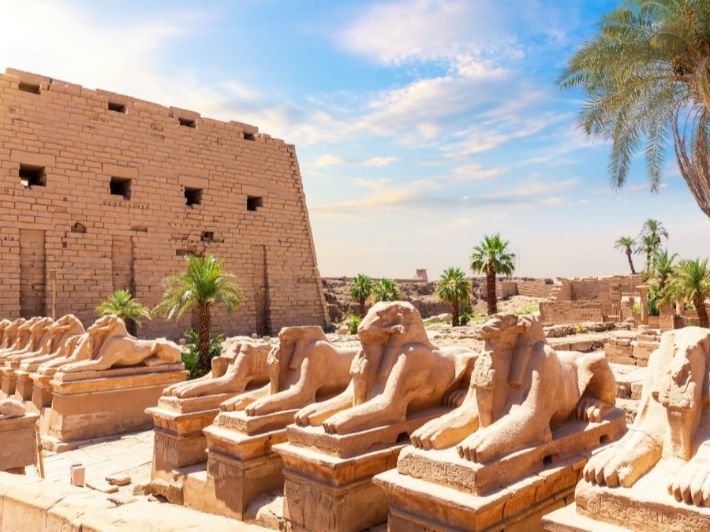
Karnak Temple holds immense historical significance as a central hub of religious, political, and cultural life in ancient Egypt. Serving as the primary place of worship for the Theban triad of Amun, Mut, and Khonsu, it was also a site of grand ceremonies and festivals. The temple’s construction, spanning over 2,000 years, reflects the evolving architectural styles and religious practices from the Middle Kingdom through the Ptolemaic period, making it a vital link to understanding Egypt’s past.
1. Origins and Development
The Karnak Temple’s origins date back to around 2055 BCE, during the reign of Senusret I in the Middle Kingdom. However, it was during the New Kingdom (1550-1070 BCE) that the Karnak Temple saw the most significant expansion and development. Pharaohs such as Thutmose I, Hatshepsut, and Ramses II contributed to the construction and embellishment of the temple, each adding their own distinct elements. The temple served not only as a religious center but also as a place of political power and economic activity, reflecting the might and influence of Thebes.
2. Religious Importance
Karnak Temple was primarily dedicated to Amun-Ra, the chief deity of Thebes, and played a central role in the religious life of ancient Egypt. The temple complex was the stage for numerous religious festivals, including the Opet Festival, which celebrated the annual re-enactment of Amun’s marriage to Mut. During these festivals, statues of the gods were paraded from Karnak to Luxor Temple, emphasizing the interconnectedness of these sacred sites. The sheer scale and grandeur of Karnak Temple underscore its importance as a religious epicenter in ancient Egypt.
Architectural Marvels of Karnak Temple
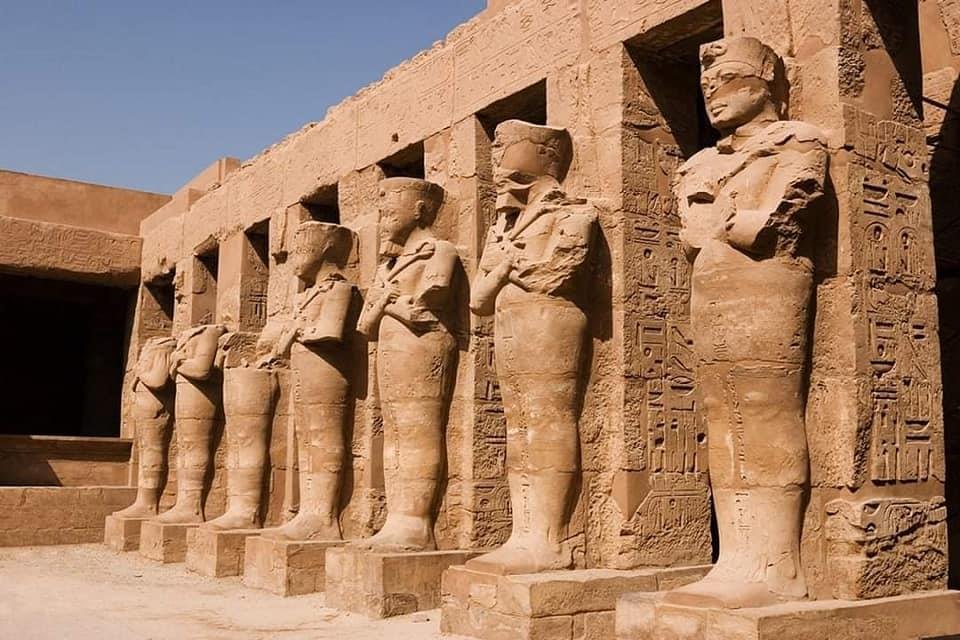
1. The Great Hypostyle Hall
One of the most iconic features of Karnak Temple is the Great Hypostyle Hall, a massive structure covering 54,000 square feet. This hall is renowned for its 134 towering columns, the tallest of which reach a height of 69 feet. The columns are adorned with intricate carvings and hieroglyphics that depict scenes of religious rituals and pharaonic conquests. Walking through the Great Hypostyle Hall is an awe-inspiring experience, offering a sense of the grandeur and scale of ancient Egyptian architecture.
Essential Egypt – Book Now
Discover the best of Egypt with our Lite and Quick tour, exploring the must-see wonders of Cairo, Luxor, and Hurghada. Start your adventure today!
2. The Sacred Lake
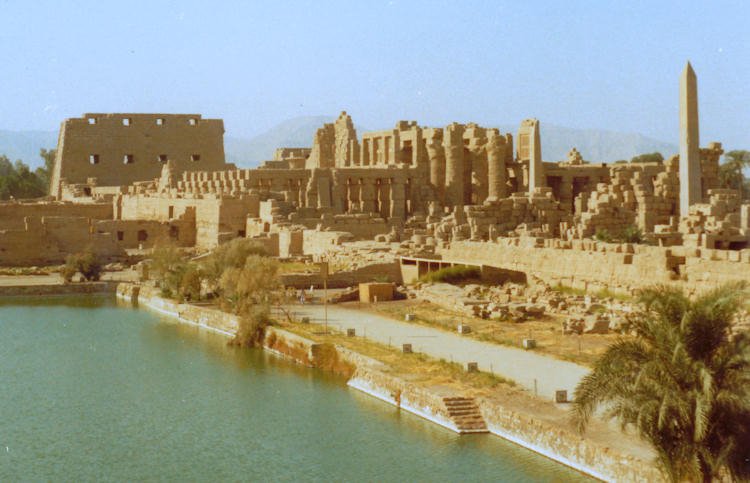
The Sacred Lake, located within the temple complex, served as a ritual purification site for priests. Measuring 393 by 252 feet, the lake was used for ceremonial purposes, including the nightly journey of the god Amun-Ra’s statue. The lake is surrounded by stone embankments and features a small shrine dedicated to the god Khonsu. The presence of the Sacred Lake highlights the importance of water in ancient Egyptian religious practices and the meticulous planning involved in the temple’s layout.
4. Obelisks and Statues
Karnak Temple is home to numerous obelisks and statues that reflect the artistry and craftsmanship of ancient Egyptian sculptors. The obelisks, often inscribed with hieroglyphs praising the gods and pharaohs, served as symbols of divine power and pharaonic authority. Notable among these is the obelisk of Hatshepsut, which stands at 97 feet and is one of the tallest ancient obelisks still in existence. Additionally, colossal statues of pharaohs, such as the seated statues of Ramses II, greet visitors at various points within the temple complex, further emphasizing the grandeur of Karnak Temple.
The Rediscovery and Conservation of Karnak Temple

1. Rediscovery and Early Excavations
The ruins of Karnak Temple were largely buried under sand and debris until their rediscovery in the 19th century. French archaeologist Jean-François Champollion, famous for deciphering the Rosetta Stone, was among the first to conduct significant excavations at the site. Subsequent archaeological efforts have revealed the temple’s complex layout and numerous hidden chambers, providing valuable insights into ancient Egyptian civilization.
2. Modern Conservation Efforts
Preserving Karnak Temple is a continuous challenge due to the effects of time, weather, and tourism. Modern conservation efforts focus on stabilizing the structures, restoring damaged artwork, and managing visitor impact. The Egyptian government, along with international organizations, has implemented measures to protect this invaluable heritage site. These include restricting access to certain areas, using advanced technology for restoration, and promoting sustainable tourism practices.
Visiting Karnak Temple
A visit to Karnak Temple is an unforgettable journey into the heart of ancient Egypt. Located in Luxor, this vast temple complex offers a unique opportunity to explore one of the most significant archaeological sites in the world. As you walk through the towering columns of the Great Hypostyle Hall, marvel at the intricate carvings, and reflect by the Sacred Lake, you will be immersed in the rich history and grandeur of this ancient civilization. Whether you’re a history enthusiast, an avid traveler, or simply curious about Egypt’s past, Karnak Temple promises a captivating and enlightening experience.
1. Planning Your Visit
A visit to Karnak Temple is an unforgettable experience, offering a deep dive into ancient Egyptian history and culture. Located in Luxor, the temple is easily accessible by air, rail, or road. Visitors are encouraged to allocate ample time to explore the extensive site, as there is much to see and appreciate.
TravMe recommends visiting during the cooler months, from October to April, to avoid the intense summer heat.
2. Guided Tours and Activities
To fully appreciate the historical and architectural significance of Karnak Temple, joining a guided tour is highly recommended. Knowledgeable guides can provide context and insights that enhance the visitor experience. Many tours include visits to other nearby attractions, such as Luxor Temple and the Valley of the Kings, allowing for a comprehensive exploration of ancient Thebes. Additionally, the Sound and Light Show at Karnak Temple is a popular evening activity that brings the history of the temple to life through dramatic lighting and narration.
Practical Tips for visitors
Wear Comfortable Clothing: Given the size of the temple complex and the hot climate, comfortable clothing and sturdy walking shoes are essential. Don’t forget a hat and sunscreen to protect against the sun.
Stay Hydrated: Carry a water bottle and stay hydrated throughout your visit. There are limited facilities within the temple complex, so it’s best to come prepared.
Respect the Site: Karnak Temple is a site of great historical and cultural significance. Visitors should respect the rules and guidelines set by the authorities, including restrictions on photography and touching ancient structures.
Purchase Tickets in Advance: To avoid long lines and ensure entry, it’s advisable to purchase tickets in advance, especially during peak tourist seasons.
The Cultural Impact of Karnak Temple
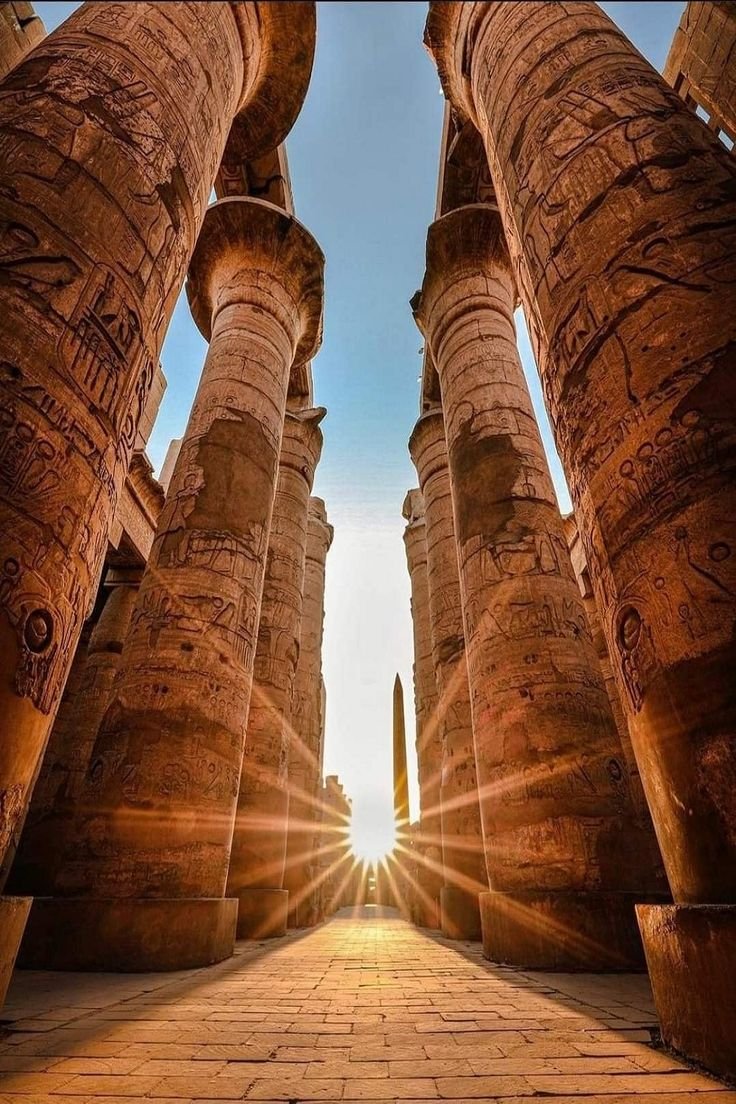
Karnak Temple’s influence extends far beyond its ancient origins, leaving a lasting imprint on art, architecture, academia, and popular culture. As one of the most significant religious complexes in ancient Egypt, Karnak has inspired countless generations with its architectural grandeur and intricate artistry. The temple’s cultural impact is evident in the way it has shaped modern understandings of ancient Egyptian society, influenced contemporary design and construction, and captivated the imagination of people worldwide through various media portrayals. This enduring legacy underscores the profound and multifaceted role of Karnak Temple in human history.
1. Influence on Art and Architecture
The architectural innovations and artistic achievements of the Karnak Temple have influenced countless subsequent structures, both in Egypt and beyond. The use of massive columns, intricate carvings, and grandiose statues set a precedent for monumental architecture. The temple’s design elements can be seen in various other ancient structures, underscoring its lasting impact on architectural practices.
2. Academic and Archaeological Contributions
Karnak Temple continues to be a focal point for academic research and archaeological exploration. Ongoing excavations and studies provide new insights into ancient Egyptian society, religious practices, and technological advancements. The wealth of artifacts and inscriptions found at Karnak Temple offers invaluable resources for scholars seeking to unravel the mysteries of this ancient civilization.
3. Popular Culture and Media
Karnak Temple has also found its way into popular culture, featuring in numerous films, documentaries, and books. Its iconic imagery and historical allure make it a popular subject for media portrayals of ancient Egypt. This widespread representation helps to keep the legacy of Karnak Temple alive in the public consciousness, inspiring new generations to explore its wonders.
Limitless Egypt – Book Now
A captivating journey through time and history, allowing you to explore the country’s ancient wonders, vibrant cities, and natural beauty. This tour typically spans several Days, providing ample time to immerse yourself in Egypt’s rich cultural heritage.
Interesting facts about Karnak Temple
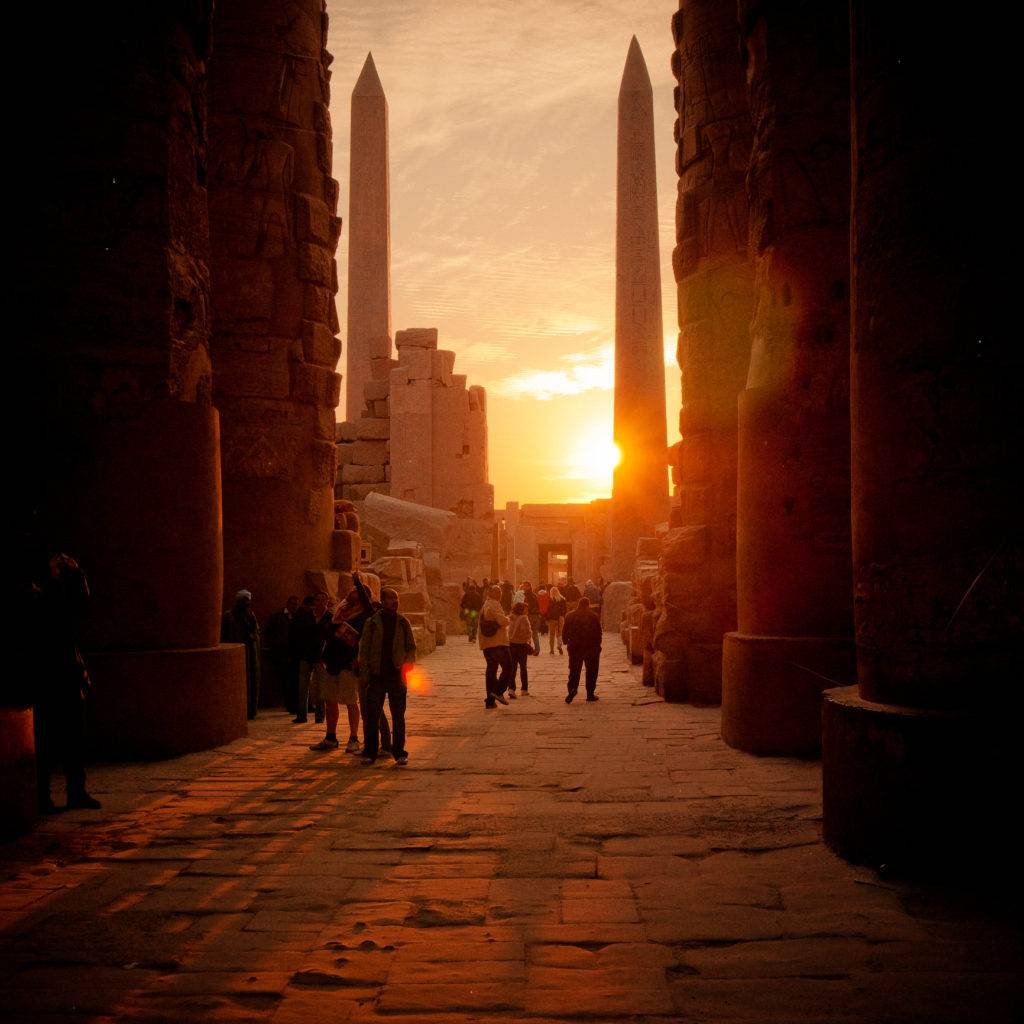
Karnak Temple is considered the largest religious building or site in the world and is essentially an open-air museum.
The Great Hypostyle Hall in the Karnak Temple covers 54,000 square feet, large enough to fit the Cathedral of Notre Dame comfortably.
Over eighty thousand servants and slaves were assigned the task of serving Amun-Ra in Karnak, highlighting his power and importance at the time. Additionally, 5,000 statues were erected in his honor.
Who Were the Gods Amun, Mut, and Khonsu?
1. Amun
Also known as Amon, Ammon, and Amen, Amun was the Egyptian god of the sun and air. Regarded as one of the most important gods, Amun rose to prominence during the beginning of the New Kingdom from 1570 to 1069 BCE. His association with the sun and air linked him to the essential elements of life, and he was often depicted as a ram-headed figure or a man wearing a double-plumed crown.
2. Mut
Also known as Maut and Mout, Mut was a goddess worshipped by ancient Egyptians. The meaning of her name is ‘mother,’ and she was known as the mother goddess. For some, she was recognized as the mother of everything in the world, while others saw her as the mother of the moon child god Khonsu. Mut was often depicted as a woman wearing a vulture headdress and the double crown of Egypt.
3. Khonsu
Known as the son of the goddess Mut, Khonsu was the ancient Egyptian god of the moon. The meaning of his name is ‘traveler,’ reflecting the nightly journey of the moon across the sky. Khonsu was often depicted as a young man with a sidelock of youth and a lunar disk on his head.
The Importance of the Karnak Temple
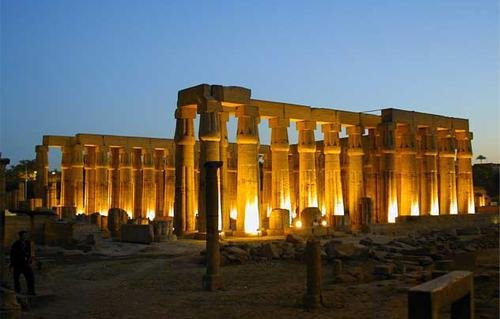
During the New Kingdom, the Karnak Temple Complex was the center of the ancient faith while power was concentrated at Thebes (modern-day Luxor), and its significance is reflected in its enormous size. In addition to its religious significance, it also served as a Treasury, administrative center, and palace for the New Kingdom pharaohs. It is to this day considered the largest temple complex ever constructed anywhere in the world.
The temple complex developed over more than one thousand years and its construction lasted until the early Christian period. The area around Karnak was the ancient Egyptian Ipet-isut (the “most selected of places”) and the main place of worship of the eighteenth dynasty Theban Triad, with the god Amun as its head. The history of Karnak is largely the history of Thebes and its changing role in Egyptian society.
The modern entrance is via the northwest corner, which is in the area of the temple of the god Montu. This area is currently under excavation and is not open to the public. From here, the temple of Amun-Re is approached through the first, unfinished pylon. The massive mud brick structures seen today are the remains of a construction period initiated by the Nubian king Taharqa during the 25th dynasty.
Karnak Temple stands as a monumental testament to the grandeur and sophistication of ancient Egyptian civilization. Its historical significance, architectural marvels, and cultural impact make it an essential destination for anyone interested in exploring the rich heritage of Egypt. Visiting Karnak Temple offers a unique opportunity to step back in time and experience the awe-inspiring achievements of one of history’s greatest civilizations.
TravMe invites you to embark on a journey through time and discover the wonders of Karnak Temple. Whether you are a history enthusiast, an avid traveler, or simply curious about ancient civilizations, a visit to Karnak Temple will leave a lasting impression.
With TravMe, plan your unforgettable journey to this remarkable site and immerse yourself in the rich tapestry of Egypt’s past.
Business Information
– Phone: +201008833030
– Fax: +20233765560
– Email: info@travmetours.com
– Address: 5 Zohor St, Hadayek El Ahram, Elite Compound, Remaya Square, Giza, Egypt.
Read More
Exploring the Enigmatic Luxor’s Valley of the Kings
Inside The Egyptian Textiles Museum | TravMe
Discover the Western Desert in Egypt
The Ultimate Guide to Exploring the Pyramids of Giza for 2024 | With Prices





Comment (0)